
9 minute read
HOTLINE — New Sponsor for Manager of the Year Contest
Gordo’s New Sponsor of 2022 Manager of the Year Contest
Nominations are now being accepted for the 2022 el Restaurante Manager of the Year Awards! The program, now in its seventh year, has a new generous sponsor for the program: Gordo’s Foodservice.
“We recognize that managers are often unsung heroes in a restaurant’s daily operations, and so we’re happy to take part in a program that honors them,” says Dan Setlak, general manager of Gordo’s Foodservice. “Managers have always played an indispensable role in leading their teams. However, these past couple of years have brought on challenges like we’ve never seen before. In so many restaurants it has been the manager’s leadership, resourcefulness and sheer determination that have been essential in keeping the operations growing, evolving and succeeding. We definitely feel they deserve recognition for all they have been through and accomplished.”
The Manager of the Year Contest, which is free to enter, provides cash prizes to the top three managers and certificates to all nominees. The winners will be profiled in an article in the Nov/Dec issue of el Restaurante. To nominate someone for the award, visit elrestaurante.com/2022-manager-contest.
Jesenia Rivera of Taqueria Los Magueyes in Upland, California, was the 1st place winner in the 2021 Manager of the Year contest.
LATINO RESTAURANT ASSOCIATION SEEKING STORIES
The Latino Restaurant Association has launched a new program to highlight the stories of Latino restaurant owners. The program, How Dreams are Cooked, will publish the stories on the LRA’s Instagram, Facebook and YouTube platforms.
“For a while we had been thinking of a way to show the human side of LRA’s members,” says Chef Tati Polo, who is a cofounder and creative director of the LRA. “The program will let restaurant owners themselves share a bit of their story and journey, how they managed to position their business, overcoming the limitations and challenges that they faced along the way. Most of the members of LRA are either immigrants or have immigrant families, which means that they face more constraints in this country.”
The first submission came from Tatiana Pacheco, owner of Andrea’s Healthy Kitchen in El Monte, California. Her story, including how a fire destroyed her business, can be seen on the LRA’s Instagram page, www.instagram.com/
latinorestaurantassociation/
If you have a story to share with the How Dreams are Cooked program, visit the LRA’s Facebook page (www.facebook.com/LatinoRestaurantAssociation/) and send a direct message.

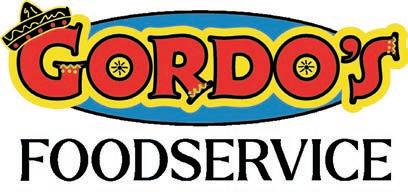
HONOR YOUR MANAGERS!
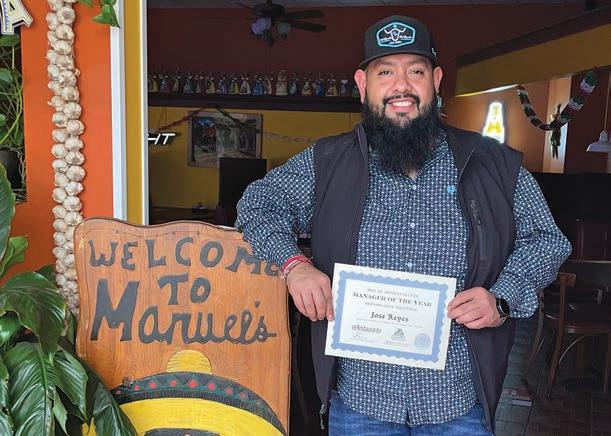

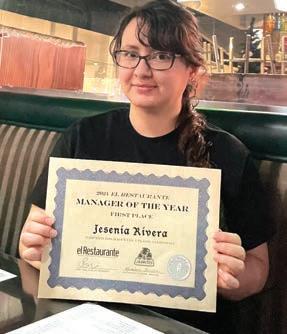

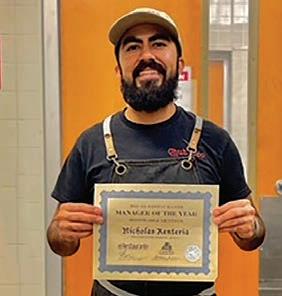
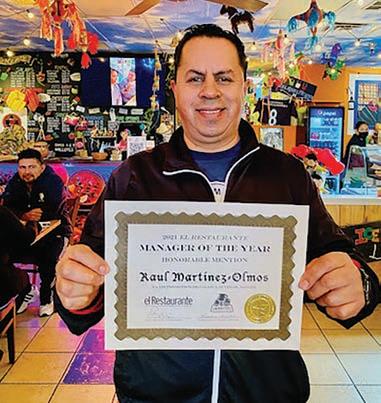

THE SEVENTH ANNUAL el Restaurante
MANAGER OF THE YEAR AWARD

NOMINATE YOUR BEST MANAGERS TODAY!
Every manager nominated will receive a certificate honoring the nomination and will be named in the Nov/Dec 2022 issue of el Restaurante. Award winners will receive cash prizes and be profiled in el Restaurante. There is no cost to nominate a manager.
FOR MORE DETAILS AND TO ENTER: VISIT



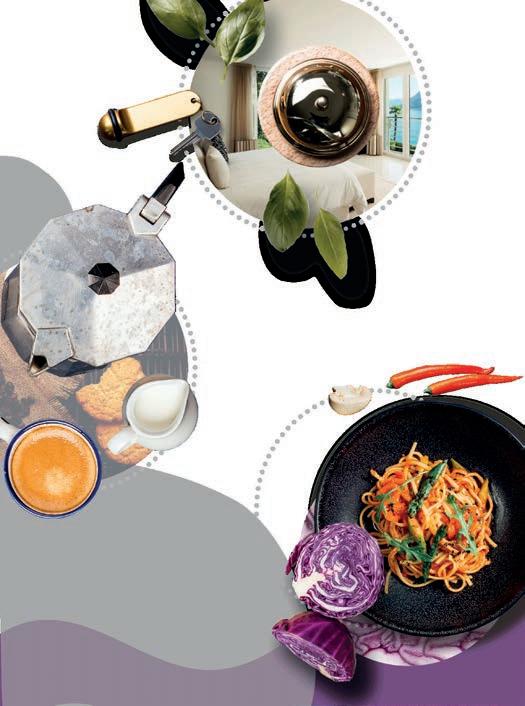

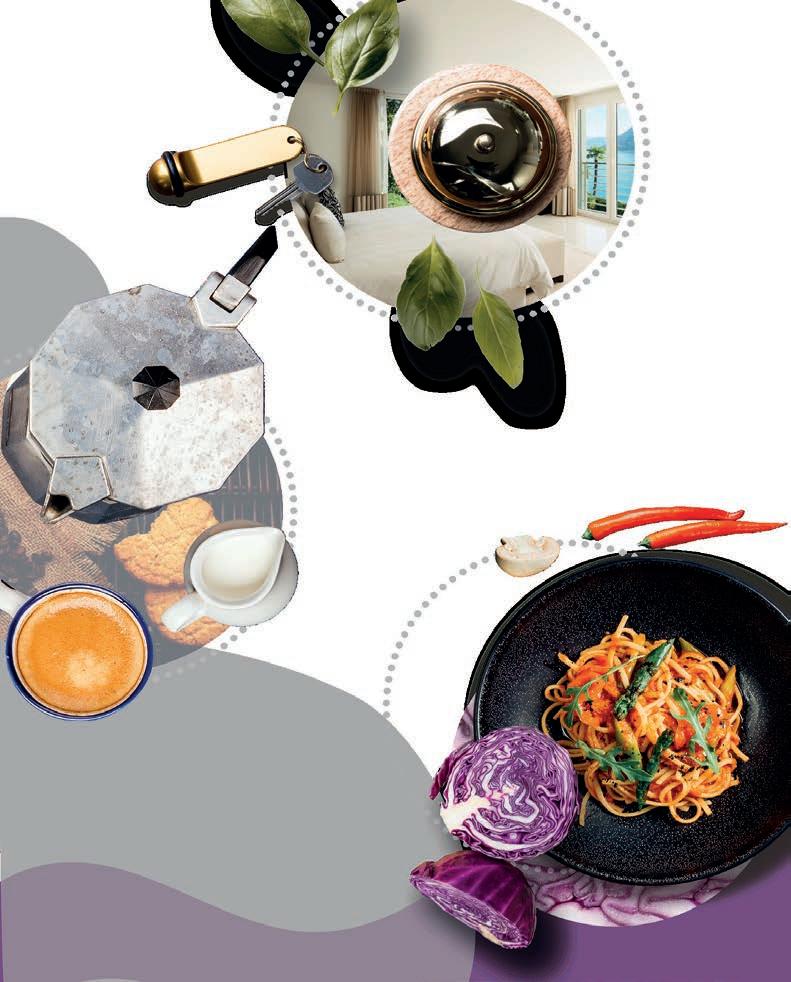
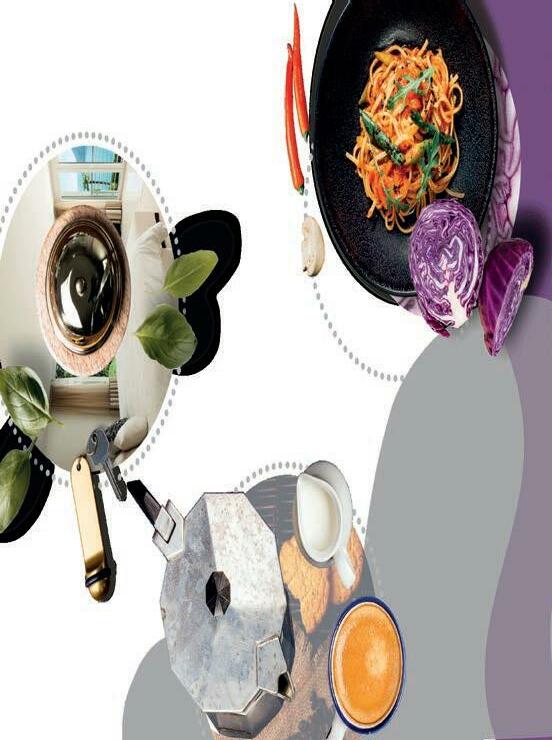





Mexican Restaurants Respond to War
When a Russian missile destroyed a humanitarian kitchen of José Andres’ World Central Kitchen in Ukraine in mid-April, the world suddenly recognized the deep commitment of the Spanish chef and his colleagues to helping the beleaguered country. World Central Kitchen, which has a team of 4,500 chefs, drivers, warehouse managers and others in and near Ukraine, is certainly the most high profile restaurant-related relief program, but many other Mexican/Latin restaurant owners are doing their part to help the embattled country.
For example, Nicha’s Comida Mexicana in San Antonio donated $10,000 to a Ukrainian relief program in early March. The owner, Richard Garcia, told a TV reporter from KSAT that his wife’s family is Ukrainian so the issue is personal. “My in-laws are there…but my wife said, ‘They’re all my brothers and all my sisters,’” Garcia said.
Another Mexican restaurant that helped the cause was La Casa Loco in Rugby, England. The restaurant held a three-course dinner on March 14 and donated all proceeds to Ukrainian relief.
“Besides this fundraiser, we have changed our nominated charity to raise funds for the Ukrainian Appeal and will also be adding an optional £1 to every normal restaurant bill,” the restaurant’s Facebook page says. The Optimal Automatics Autodoner is ideal for preparing cones of al pastor and other stacked meats. Comes in many sizes and models, including natural gas, electric, and LP.


Se habla espanolSe habla espanol 847-439-9110 847-439-9110 www.optimalautomatics.com www.optimalautomatics.com
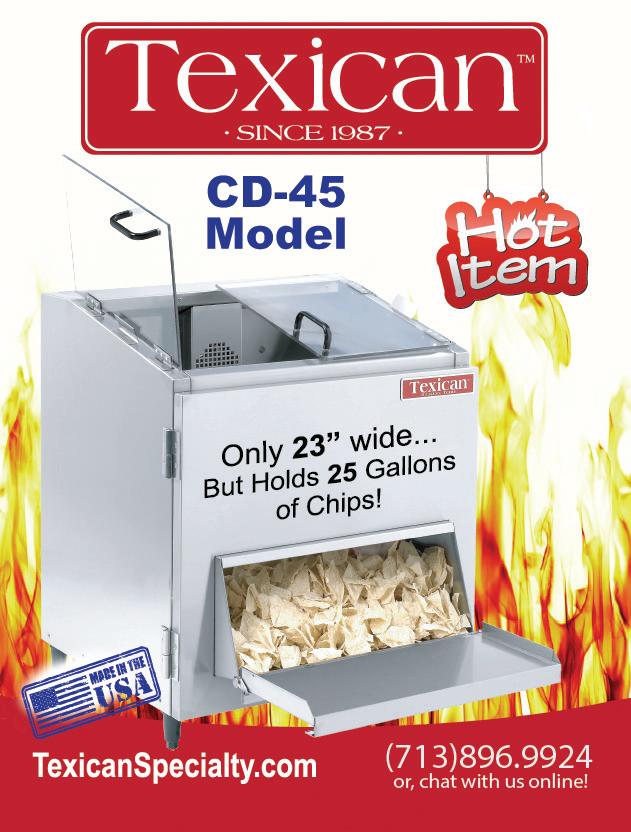
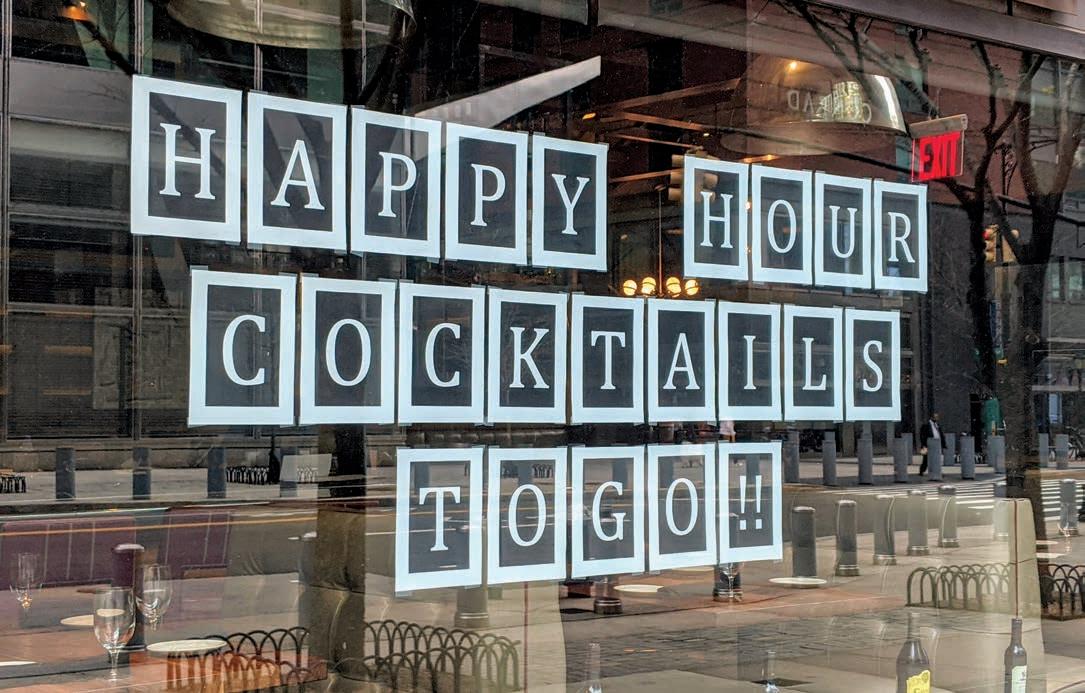
–LORRAINE SALAZAR, Sal’s Mexican Restaurant
TO-GO LIQUOR SALES: Still a Factor
| BY ED AVIS | When COVID shut down restaurants across the country in 2020, most states responded with an important rules change: They allowed restaurants to sell liquor with take-out orders. The ability to sell liquor that way helped a lot of restaurants survive. As NPR reported in April, “Across the country, looser liquor laws may be one long-term side effect of the COVID-19 outbreak.”
Today, carryout cocktails continue to spike profits at many restaurants.
According to an el Restaurante reader survey conducted in early July, Mexican/ Latin restaurants that sell liquor to-go sell about 13 percent of their liquor that way, on average. There was a wide range of response to that question — some restaurants in the group sell only about 1 percent of their liquor to-go, while some sell as much as 45 percent.
RESTAURANTS SHARE THEIR STORIES
At Zaco’s Tacos in Culebro, Puerto Rico, take-out alcohol comprises about 10 percent of total alcohol sales.
“When COVID started and everything had to be to-go, we started serving drinks, too, and it worked out great,” says Kevin Vizcarrondo, the bar manager at Zaco’s Tacos. “Even now, sometimes people order a margarita while they’re waiting for their take-out food, and when it’s ready they say, ‘That was super nice, can I get another one to go?’”
But even restaurants that don’t sell much alcohol to-go appreciate the option. For example, Lorraine Salazar, co-owner of Sal’s Mexican Restaurant in Fresno, California, says to-go liquor sales make up less than one percent of her total liquor sales, but she still offers it.
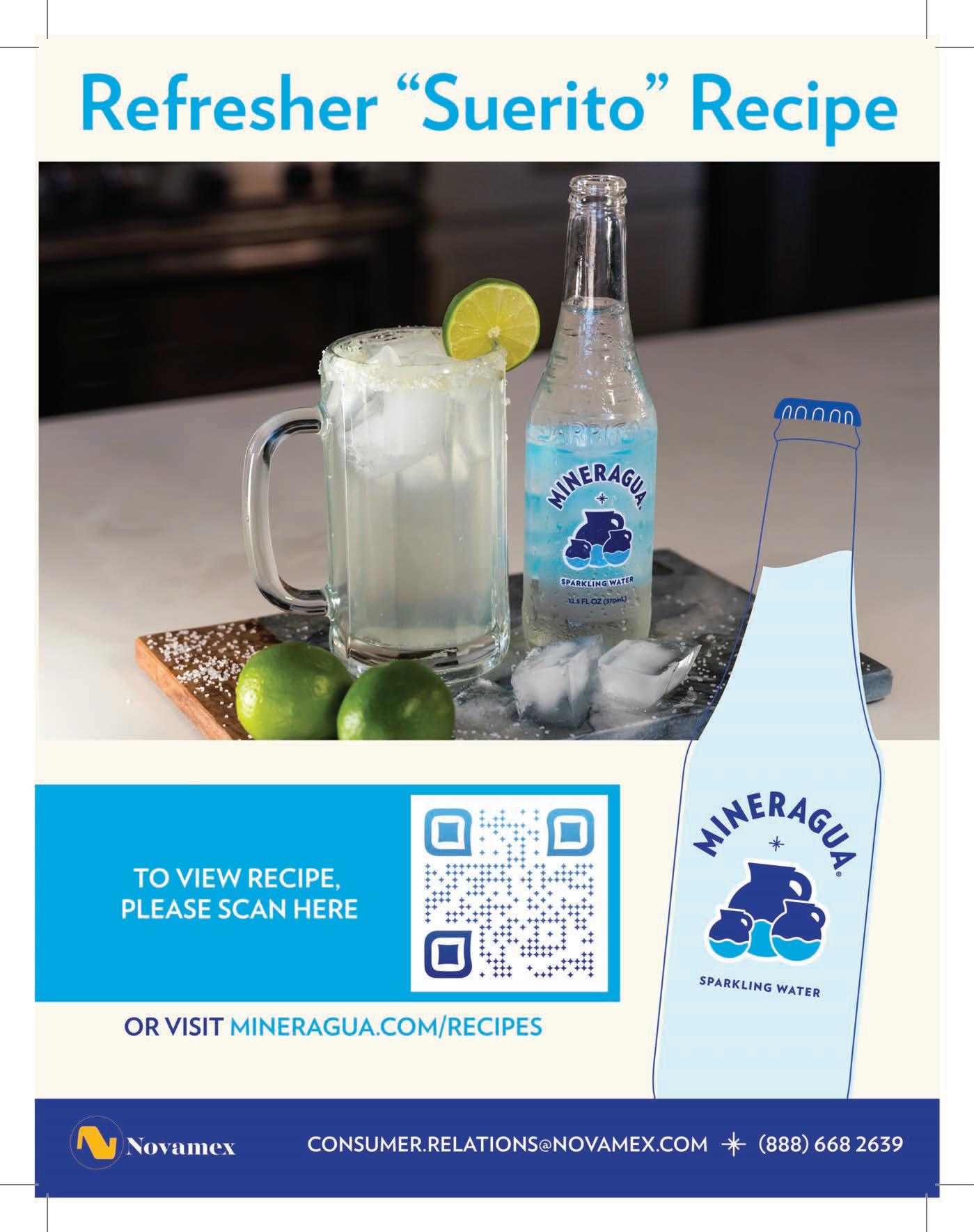
A STATE-BY-STATE SITUATION
While customers are embracing the carryout cocktail phenomenon, not every Mexican restaurant has the option to boost bar sales with take-home alcoholic beverages. Location, as they say, is everything.
As NPR reported in April 2022, Iowa became the first state to make the change permanent in 2020, and at least 17 other states have followed suit with their own laws to permanently allow carryout alcoholic beverages. California, Texas and Florida are among them.
Many states still allow these sales for the time being but have not permanently changed the rules. Illinois, for example, extended the timeframe that businesses can continue serving cocktails and single servings of wine for takeout and delivery until Jan. 3, 2024, while Washington extended allowances for to-go alcohol sales until July 1, 2023.
Some states, such as Utah, however, never allowed it. And in many cases, local jurisdictions have stricter rules than the state.
The specifics of the rules vary. Some states allow delivery of alcohol while others limit it to take-out orders, for example, and some states allow already-mixed cocktails while others limit alcohol sales to sealed, original containers.
It’s a fluid situation – literally and figuratively. The best approach: Check state and local laws to make sure you’re in compliance. And if to-go liquor is allowed, determine how to make it a profitable venture for your restaurant.
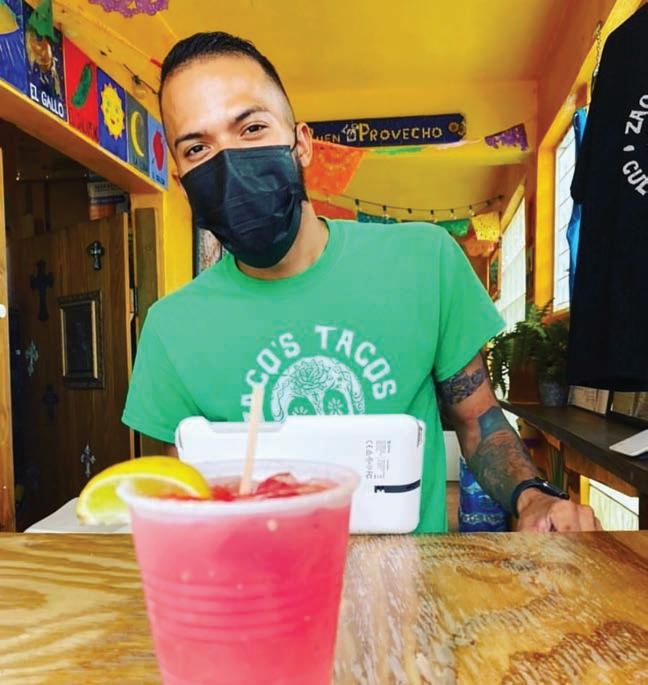
Kevin Vizcarrondo
– KEVIN VIZCARRONDO, Zaco’s Tacos
“It’s another offering, another opportunity for a sale and another convenience for our guests, and that’s important,” Salazar says.
WHAT’S SELLING TO-GO
According to the el Restaurante survey, the most popular alcoholic beverage sold via take-out is the margarita. Seventy percent of respondents ranked that classic cocktail number one. Beer takes the second spot, followed by mojitos.
Margaritas are top-sellers at Sal’s Mexican Restaurant, where the cocktail comes pre-mixed in a plastic half-pint or full-pint container. The rimmer — a salt and Tajin mix — is included in a separate small, plastic container, Salazar reports. The container with the margarita must be sealed with a strip that, presumably, would make it harder for the customer to open the container and drink it while driving home.
“It does cost us more to make a to-go margarita because of the containers, but there’s room in the margin for those costs,” Salazar says.
Vizcarrondo says he’s happy to serve any alcoholic drink to-go, including tap beer and shots.
“I like to make life easier for everybody,” he says. “When you come to place like Culebro, every day is like Friday, we have the best beaches in the world, and we help each other here.”









